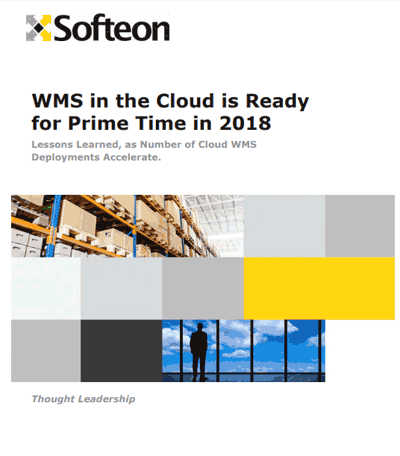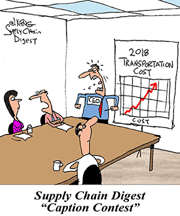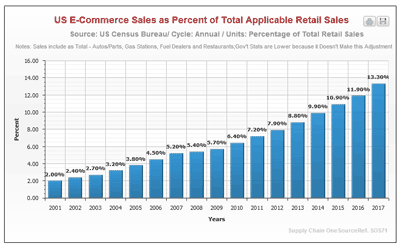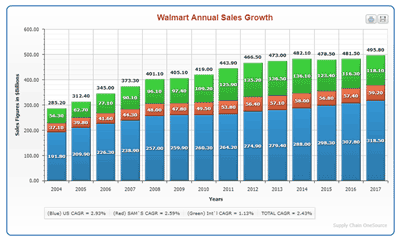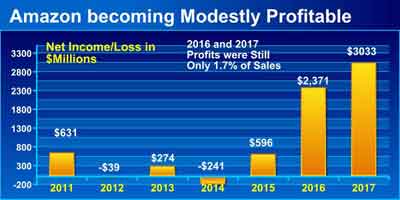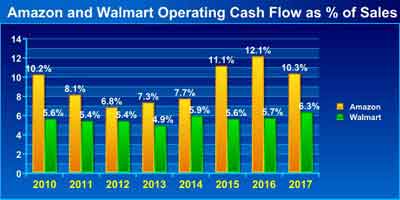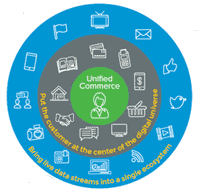 |
August 3, 2018 - Supply Chain Flagship Newsletter |
 |
|
||||||||
 |
|
||||||||||||||||||||||||||||||||||||||||||||||||||||||||||||||||||||||||||||||||
|
|||||||||||||||||||||||||||||||||||||||||||||||||||||||||||||||||||||||||||||||||
|
|
|
YOUR FEEDBACK
We are way behind on Feedback. Catching up on some email here.
Feedback on a New Way to Think about Gartner and the Top Supply Chains:
![]()
Excellent article, thank you for your analysis. Whenever I see a comparison or rankings of this nature it makes me think, who's raising the question (who cares) and why?
Beyond obvious bragging rights does an analysis of this nature equate to a higher stock price? Do underwriters give more favorable rates or increase the scope of coverage? Does the CEO use the analysis as a way to communicate to shareholders that the organization is achieving a greater return on invested capital? Or for a Risk Manager does it mean that the higher ranking organizations will be able to better manage (or exploit) "black swan" events?
If we move away from the operational performance metrics, does a higher ranking equate to greater difficulty for disrupters or new entrants to enter the market? Does the ranking equate to greater financial leverage over suppliers or the customer (a greater willingness to pay)? Does the ranking reflect overall speed of execution in the market, i.e. not just inventory turns but an ability to exploit an opportunity?
Dan, I think your article brought to light the elephant in the room and a question many think but don't ask. As a former Gartner Research Director I am very aware of "the process" and the purpose for these studies. Gartner's value is it's directional research. They are also in the marketing business and must create hype, community and competition. Studies (and conferences, research notes, special research projects) do exactly that! This is about the benefit to Gartner and their ability to drive business.
Of course, they are not alone and I don't mean to infer that they act alone. Bottom line: until the "who asking the question" and "why" are the motivated to address such a question, then studies of this nature are limited to entertainment value.
Gary S. Lynch
CEO and Founder
The Risk Project, LLC

Feedback on Home Depot and the Arc of Supply Chains:
![]()
Excellent story. For supply chain to be a competitive advantage, dynamic operating model approach is a must. You got to pro-actively understand (I mean, really understand...) your customers and shape the operations/supplychain to provide a personalised, meaningful and profitable customer experience... Little bit of tinkering here and there just doesn't cut it.
You can sweat your assets only so much. If the alignment is fundamentally flawed, you will only create stress... And on a different angle, endless personalisation won't get you far.
Vikram K Singla
Oracle

Feedback on Gartner Conference:
![]()
Picking up on your report on what Anthony Bourke was saying and your comment reminded me of a 30 minute meeting I started holding with my logistics team every Friday just before lunch. I asked each one to select something that had gone right that week and to flag up one that had gone wrong. I then asked them to report on one concern about what might go wrong the following week.
It certainly concentrated minds and after a relatively short while brought through a great deal more collaboration and made a major contribution to improved customer service and cost control.
David MacLeod
Learn Logistics Limited

![]()
An excellent round up of the proceedings. I particularly liked the way you covered Fareed Zakaria's observations on the threats of increasing digitization. It was great reading through your summary. Thanks indeed.
Krishnan

SUPPLY CHAIN TRIVIA ANSWER
Q: Which were the top 5 largest US truckload carriers by revenue in 2017?
A: (1) Knight-Swift Transportation; (2) Schneider; (3) Landstar; (4) JB Hunt; (5) TFI International, according to the new Transport Topics list.
| © SupplyChainDigest™ 2003-2018. All Rights Reserved. SupplyChainDigest PO Box 714 Springboro, Ohio 45066 |
POWERED BY: XDIMENSION
|
